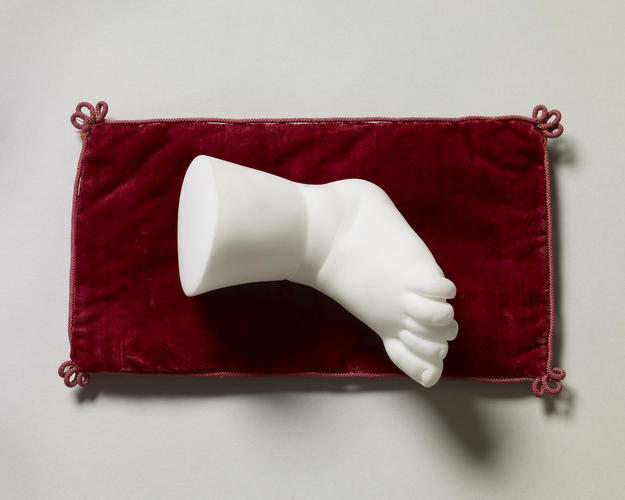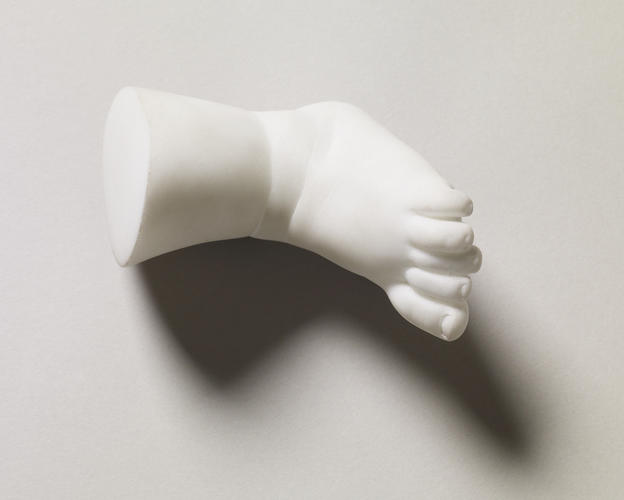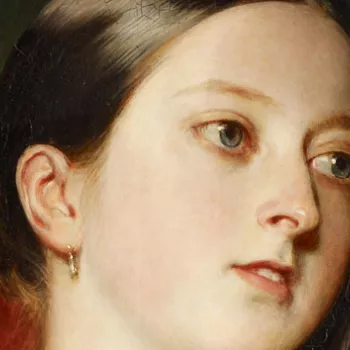Left foot of a child 1840-58
Marble | 14 cm (Width) (length) | RCIN 34730
-
Following Queen Victoria's death in 1901 a collection of fourteen marble hands and feet, facsimiles of the infant limbs of her children, was sent from her private apartments at Buckingham Palace to be kept at Osborne. These remarkable objects were presented on crimson velvet cushions (in some cases marble slabs) and kept under glass domes to preserve the pristine whiteness of the marble. They are another manifestation of the Queen's desire to capture fleeting likenesses and souvenirs of her children as they grew, whether by means of miniature portraits or jewellery fashioned out of milk teeth. Although hands and feet are often the features that mothers remember of their babies, and firms exist even today to offer casts, Queen Victoria seems to have favoured marble replicas as providing the most faithful souvenirs. The need to realise the limbs in marble is perhaps best explained by a passage in Balzac's Le Chef-d'oeuvre inconnu in which an elderly painter, Frenhofer, lectures the young Frans Pourbus: the mission of art, he declares, is not to copy nature but to explain it. A plaster cast of the hand of one's mistress seems like ‘a horrible cadaver, without the slightest resemblance’; it requires ‘the chisel of a man who, without copying it exactly, can impart to it movement and life’. Owing to the subconscious funerary association of white marble, many visitors to Osborne mistake the limbs for memorials of children who died in infancy, whereas all of Queen Victoria's nine children survived well into adulthood. Text from Victoria & Albert: Art & Love.
-
Medium and techniques
Marble
Measurements
14 cm (Width) (length)
Category
Object type(s)











